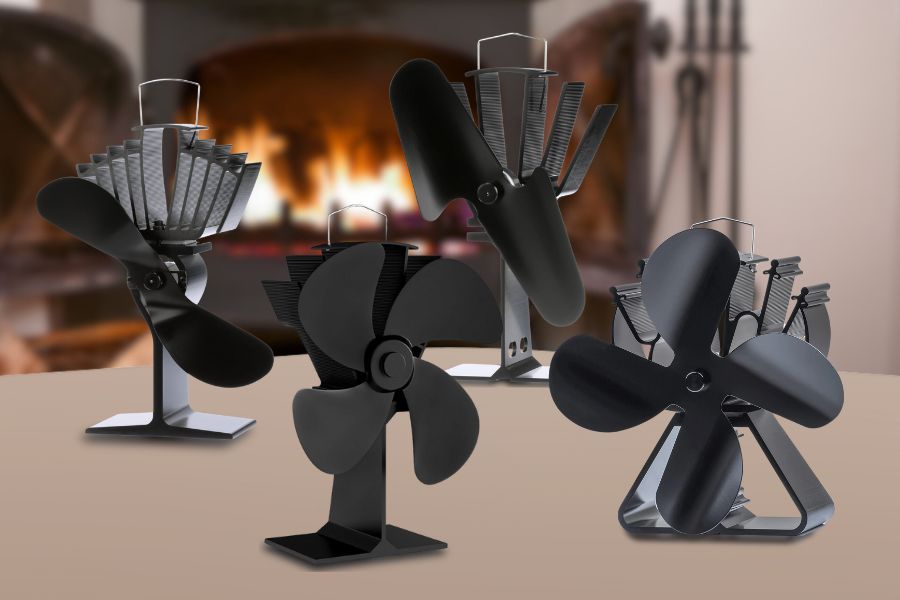Wood stoves are a very popular appliance that generates heat by burning wood for heating homes. The smoke produced by the burning rises and is removed through the flue and out the chimney, while the ash created is stored in the interior. The wood burns at a very high temperature. As a result, the stove puts in a significant amount of heat.
Unfortunately, this heat usually doesn’t spread very quickly because there is no method of dispersal. It rises and then spreads through convection, which can take some time, depending on the room’s air circulation. This is where the subject of this article, the wood stove fan, comes into play.
In the following paragraphs, we’ll go over a wood stove fan, how it works, why you want one, and how to find the best one. At the end, we’ll recommend some products for you to check out once you decide if a wood stove fan is for you.
So now that you see the benefits a wood stove fan offers, you need to know what to look for when you buy your own. Keep an eye out for this information to ensure you get the best wood stove fan for your situation.
Size and Strength
Perhaps the most important detail you should find out before making a purchase. The size of the fan, as well as the size of the blades, will determine how well it moves the air. The air moved is measured in cubic feet per minute, or CFM. The larger the fan and blades, the more air is moved. The strength also usually correlates to the number of blades.
Number of Blades on Your Stove Fan
There are a few variations of blade counts, but the most popular are 2 and 4, where the 4-blade models usually have a higher CFM. It is generally better to have more blades, and the 2 blade models are thought to be less effective.
Power Source
Some models of wood stove fans use a power source such as electricity or batteries to operate. However, the most environmentally and economically friendly option is a fan powered by thermal energy. So below, we’ll review some of the best heat-powered stove fans.
Noise Levels
Although many models are silent or near-silent, non-thermal fans with motors can sometimes have higher noise levels. This would be similar to a normal desk fan’s noise, but likely on a smaller scale. There is usually a trade-off between silence and effectiveness, but many silent models will hold their own!
Look of the Wood Stove Fan
If you’ve painted your wood stove a specific color or just want to match the décor of your room, you can get a different colored fan. The standard color is black. However, gold, silver, and other color models are also available.
The best wood stove fan would be strong enough to ensure it can heat the entire room as quickly and quietly as possible. It should also require no fuel source except the thermal energy of the stove, and it should look great on top of your stove as well.
Best Wood Stove Fan Reviews – Our Top Picks
- Best Overall: ECOFAN AirMax Wood Stove Fan
- Best Value: Home-Complete Wood Stove Heat Powered Fan
- Best Budget: VODA 4-Blade Heat Powered Stove Fan for Wood Fireplace
- Best for Smaller Rooms: Caframo Ecofan Original Blade Heat Powered Stove Fan
Best Overall: ECOFAN AirMax Wood Stove Fan
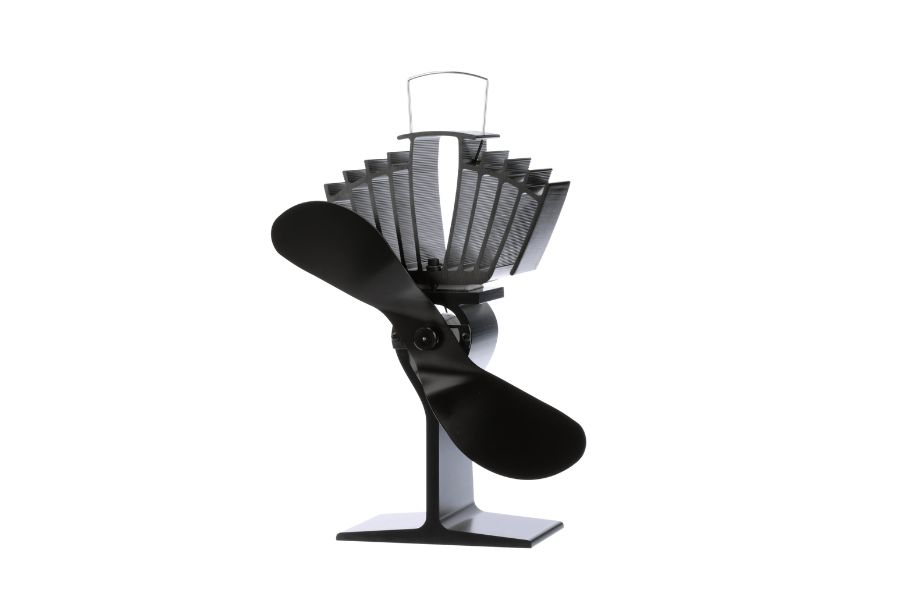
This 2-blade fan is at the top of the price range. It moves 175 cubic feet per minute, although other models offer that or more at a major discount.
Similar to the other Caframo model, it is also 10 inches tall. However, the blades are larger and spin at a faster rate to produce the extra CFM. Like the other models reviewed below. It is also silent and thermal powered.
Best Value: Home-Complete Wood Stove Heat Powered Fan
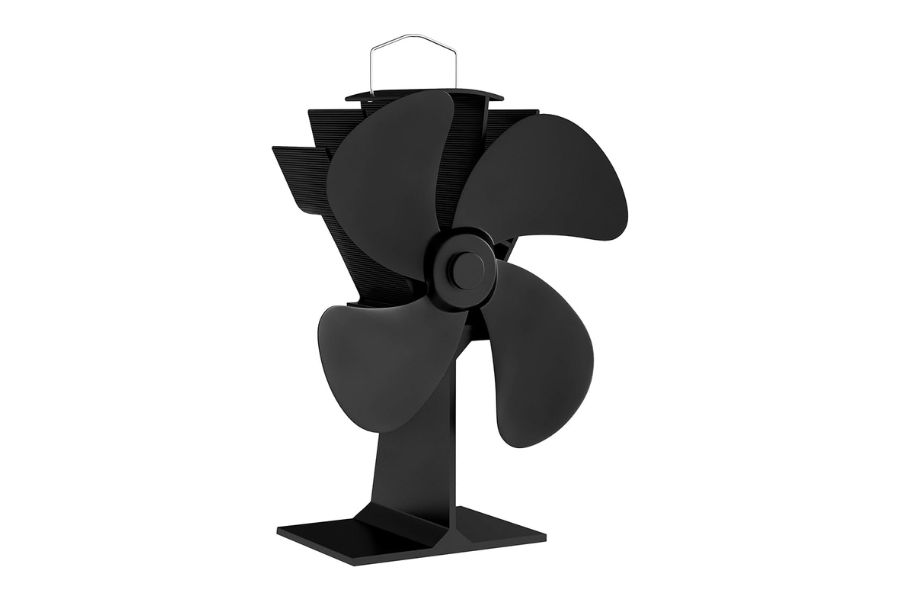
This 4-blade model is priced on the lower end of the products that were reviewed. Coming in at about 8 inches tall, it is a slightly smaller fan than some of the alternatives, but the 4 blades will still allow it to move a respectable 175 cubic feet per minute. It is nearly silent and is thermal-powered as well.
Best Budget: VODA 4-Blade Heat Powered Stove Fan for Wood Fireplace
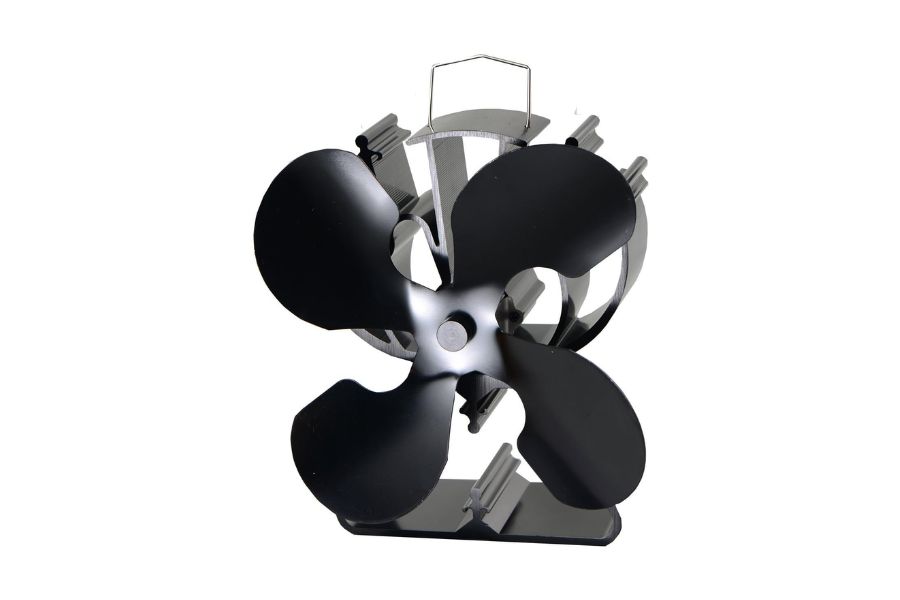
Another 8-inch fan with 4 blades, this model is priced almost exactly the same as the Home-Complete model and has the best performance per dollar. It is capable of moving more air at a high rate of 240 cubic feet per minute, making it the strongest of the recommendations.
It has a near-silent operation, is powered by thermal energy, and comes in 3 colors: gold, silver, and black.
Best for Smaller Rooms: Caframo Ecofan Original Blade Heat Powered Stove Fan
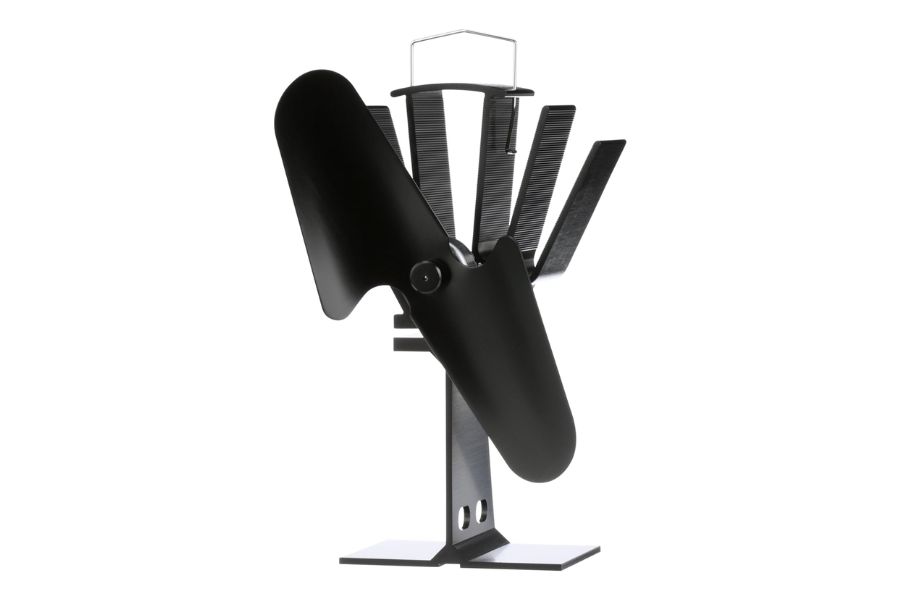
At a slightly upper middle price range, this fan stands about 10 inches tall, although it only has 2 blades. Coming in at 100 cubic feet per minute, it is less efficient than the 4-blade models but is also silent and thermal-powered. This model is recommended for smaller rooms.
What Is a Wood Stove Fan?
A wood stove fan is a fan that sits above your wood stove in order to help disperse the heat it produces. Usually styled to look like black wood stove pieces, they are usually made of metal and have a varying number of blades. They also come in an array of sizes depending.
Choose the best one based on your stove’s size and how much help it needs circulating the heat. Many current models also require no batteries or electricity, just thermal energy, and are also nearly silent. This makes them the perfect addition to the eco-friendly wood-burning stove.
Benefits of a Wood Stove Fan
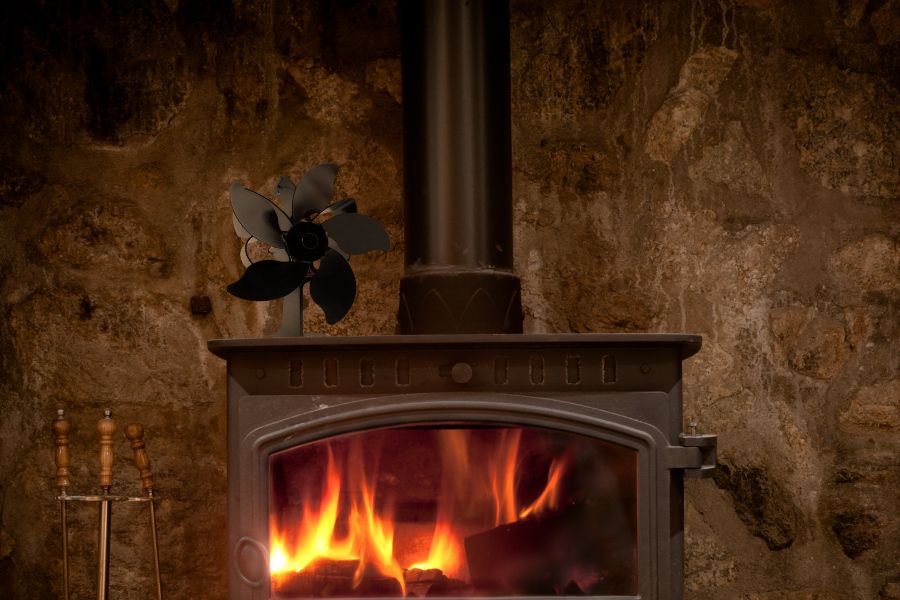
Wood stove fans are a great way to make your wood stove heat the room faster and expand its reach. Because the heat has no direction without a fan, it simply rises out from the stove and blends with the cool air. From here, it depends on the air circulation in your home to move the air through convection, which is not time-efficient.
When using a fan, as soon as the fire reaches a high temperature, it immediately spreads the warm air outwards. This allows the heat to spread faster and heat more area because the warm air isn’t wasted sitting at the ceiling above the stove.
How Does a Heat-Powered Wood Stove Fan Work
A wood stove fan will help your wood stove heat up a large room in less time than without one. This is why these types of heat-powered fans are so popular. But how do they work? Here are the basics behind the fans you’ll see featured above.
We all know heat rises. And when you have a wood stove fan, this is still the case. If you look at the heat output of your stove, you’ll likely find that the warmest part is directly around and above your stove. But I bet you want to heat a room, not just a few feet around the stove. You need a way to move the warm air around your room.
The wood stove fan works by converting the heat, or thermal energy, created by burning the wood to kinetic energy. The transfer from thermal to kinetic energy is shown by the fan blades. They begin to spin as the base of the fan begins to get warmer.
Once it begins spinning, it disperses the air horizontally across the room, which speeds up the heating process. Once you put out the fire and the temperature decreases, the fan will slowly begin to slow down. This is because its fuel source, the thermal energy, is depleting.
Check out this video, which shows how the fan will work.
Do Wood Stove Fans Work?
It sounds almost silly to think about a fan powered only by the heat coming off a stove. And many people who see a wood stove fan often ask if it works. And we are here to say they do!
We all need to remember that these are fans that move heat. They aren’t creating or dispersing heat too far from the original source. If you’re looking to take the heat from a stove in one room and push it into all the rooms in your house – well, you’ll be sorely disappointed.
But what can you expect? You can expect the surrounding areas around the heat-powered fan and wood stove to get warmer. You should expect the air around and above the stove to rise a few degrees when your fan is rotating at its fastest. How much warmer and how quickly will obviously depend on the size fan you get.

